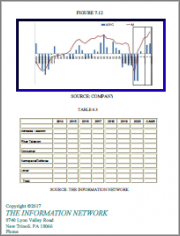
|
시장보고서
상품코드
1407931
세계의 3D 프린팅용 고성능 플라스틱 시장Global 3D Printing High-Performance Plastics Market |
||||||
세계 3D 프린팅용 고성능 플라스틱 시장을 조사했으며, 시장 정의와 개요, 시장 영향요인 분석, 시장 규모 추이 및 예측, 각 부문별/지역별 상세 분석, 경쟁 구도, 주요 기업 개요 등의 정보를 정리하여 전해드립니다.
목차
제1장 서론
제2장 요약 및 하이라이트
- 시장 전망
- 시장 요약
제3장 시장 개요
- 정의
- 시장 환경
- 3D 프린팅에서 고성능 플라스틱의 역할
- 기술 개요
- 시장 역학
- 성장 촉진요인
- 과제
- 기회
제4장 시장 분석 : 유형별
- 개요
- 폴리아미드(PA)
- PEEK/PEKK
- 기타
제5장 시장 분석 : 기술별
- 개요
- 용해 증착 모델링(FDM)
- 선택적 레이저 소결(SLS)
제6장 시장 분석 : 최종사용자별
- 개요
- 의료
- 운송
- 기타
제7장 시장 분석 : 지역별
- 세계 시장
- 북미
- 유럽
- 아시아태평양
- 기타 지역
제8장 ESG 전개
- 시장 주요 ESG상 문제
- 시장 ESG 관행
- 3D 프린팅용 고성능 플라스틱 시장에서의 ESG 현황
- ESG의 미래
- 사례 연구
제9장 경쟁 구도
- 전략적 분석
- 시장 점유율 분석
- 주요 시장 동향
제10장 기업 개요
- 3DXTECH
- ARKEMA
- EVONIK INDUSTRIES AG
- LEHMANN&VOSS&CO.
- SABIC
- SOLVAY
- STRATASYS LTD.
- VICTREX PLC
- VEXMA TECHNOLOGIES PVT. LTD.
제11장 부록 : 약어
LSH 24.01.22Highlights:
The report provides an overview of the global 3D printing high-performance plastics market and its related segment. The report has been segmented based on type, technology, end-user, and region. Using 2022 as the base year, the report provides estimated market data for 2023 through 2028. The report examines the current trends, market drivers, and challenges within the 3D printing high-performance plastics market.
Report Scope:
A broad range of plastics are used in the 3D printing industry; however, the report emphasizes only the category of high-performance plastics, including polyamide, polyetherimide, polyetheretherketone, polyetherketoneketone, polyvinylidene difluoride, and polyphenylsulfone. This study also encompasses qualitative and quantitative analysis of technologies, end-users, and regions associated with the 3D printing high-performance plastics market.
Based on technology, the market is segmented within fused deposition modeling (FDM) or fused filament manufacturing (FFF) and selective laser sintering (SLS). Based on end-users, the study entails segmentation within medical, transportation (automotive and aerospace) and others (oil, gas and energy sector).
Regional estimates and forecasts comprise North America, Europe, Asia-Pacific and the Rest of the World (RoW). Regional analysis provides insights into local competitors and market dynamics. The segmentation also entails analyses by end-user.
Revenue forecasts from 2022 through 2028 are given for each type, technology, end-user and regional market.
Report Includes:
- An overview of the global market for 3D printing high-performance plastics
- In-depth analysis of global market trends, featuring historical revenue data for 2022, estimated figures for 2023, as well as forecasts for 2028. This analysis includes projections of compound annual growth rates (CAGRs) through 2028
- Evaluation of the current market size and revenue growth prospects specific to global 3D printing high-performance plastics, accompanied by a market share analysis by type, technology, end user and geographic region
- Coverage of evolving technologies and a discussion of their impact on the future of the market
- Evaluation of the current and future market potential and an analysis of the regulatory framework and reimbursement scenarios
- Market share analysis of the key companies in the industry and coverage of mergers & acquisitions, joint ventures, collaborations, partnerships, and other market strategies
- Detailed profiles of leading market participants, providing a descriptive overview of their respective businesses
Table of Contents
Chapter 1 Introduction
- Study Goals and Objectives
- Reasons for Doing This Study
- Scope of Report
- Methodology
- Information Sources
- Geographic Breakdown
- Segmentation Breakdown
Chapter 2 Summary and Highlights
- Market Outlook
- Market Summary
Chapter 3 Market Overview
- Definition
- Market Environment
- Role of High-Performance Plastics in 3D Printing
- Technology Overview
- Market Dynamics
- Drivers
- Challenges
- Opportunity
Chapter 4 Market Analysis by Type
- Overview
- Polyamide (PA)
- PEEK and PEKK
- Others
Chapter 5 Market Analysis by Technology
- Overview
- Fused Deposition Modeling (FDM)
- Selective Laser Sintering (SLS)
Chapter 6 Market Analysis by End User
- Overview
- Medical
- Transportation
- Others
Chapter 7 Market Analysis by Region
- Global Market
- North America
- Europe
- Asia-Pacific
- Rest of the World (RoW)
Chapter 8 ESG Development
- Key ESG Issues in the Market
- ESG Practices in the Market
- Current Status of ESG in the 3D Printing High-Performance Plastics Market
- Future of ESG
- Case Study
Chapter 9 Competitive Landscape
- Strategic Analysis
- Market Share Analysis
- Key Market Developments
Chapter 10 Company Profiles
- 3DXTECH
- ARKEMA
- EVONIK INDUSTRIES AG
- LEHMANN&VOSS&CO.
- SABIC
- SOLVAY
- STRATASYS LTD.
- VICTREX PLC
- VEXMA TECHNOLOGIES PVT. LTD.



















